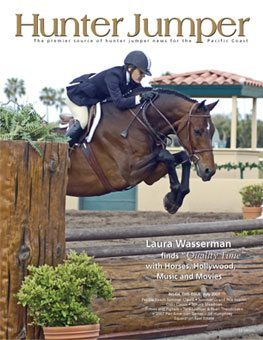by Tonya Johnston, MA
Appeared in Hunter Jumper Magazine, July 2007
In a typical 8-hour day, how much time are amateur and junior competitors actually in the ring? 5 minutes? 10 minutes? This is the nature of horse showing, and it creates an interesting challenge. How can you best prepare yourself and get focused for the ring when it is finally time to ride?
Summer is a time for enjoying horse shows to their fullest, and everyone enjoys showing for their own unique blend of reasons, including: challenging yourself and your horse, winning, socializing, learning new skills, vacationing, traveling, and simply having fun. With all of these different motives to show, as well as all of the potential distractions and pressures involved in competing, it is little wonder your focus can become diffused.
In a typical 8-hour day, how much time are amateur and junior competitors actually in the ring? 5 minutes? 10 minutes? This is the nature of horse showing, and it creates an interesting challenge. How can you best prepare yourself and get focused for the ring when it is finally time to ride?
Start with what works
How have you prepared for some of your best rides? Investigate what has worked for you in the past by examining some of your best horse show rides. Think back and try to re-create a terrific round. Where were you? Can you remember the course? What was the atmosphere?
Once you have re-created the scene, remember the specific preparation details of your ride, by asking yourself these questions:
- What was I thinking that day? (Before I got on, in the warm-up ring, and at the back gate?)
- How did I prepare myself physically? (Eating, hydrating, rest, etc.)
- How detailed was my course plan and how did I learn it?
- What key things did I remind myself of before I went in the ring?
As you go through these questions, take care to focus on the things that happened that were within your control. (Laughing when a butterfly landed on your horse’s braids is a lovely memory, but it can be a bit tricky to replicate.) Good examples would include: sat alone at my ring and visualized my course, ate some fruit, took a rest in my car with the air conditioning on, started my ride by walking around the warm-up ring in my half-seat, etc.
Try to think through 2 – 4 recent good rides, using the above questions to recreate your preparation details. You will probably start to see some repetitions and patterns – you can then be sure to include those factors in your future pre-ride routines.
Pre-Ride Routines: The Basics
Everyone rides differently and thinks differently – thus everyone prepares differently. However, consistency in the show ring improves when you employ some personal preparation factors to enhance your focus and confidence. A pre-ride routine is simply a group of things you do, both mentally and physically, to sharpen your focus before you get on your horse. Your routine might not work for anyone else, and it doesn’t need to; the most important thing is that you trust it to help you concentrate and ride your best.
Physical Factors
These are the aspects of your pre-ride routine that address your readiness to take on a physically demanding challenge – riding your horse around a course of jumps. Do you need to warm-up before you get on your horse? The rider’s warm-up is often overlooked in equestrian sport. As you age, it becomes increasingly important to pay attention to loosening up your body. At a show, especially on a Saturday or Sunday, your horse may not need more than a little flatwork and two or three jumps before going in the ring – but is that enough for you to get limber and get your heart-rate up? If you are used to 20 minutes of flatwork before jumping, you’ll need to supplement your warm-up routine at a show to make sure your body is ready to perform.
Physical factors in your pre-ride routine can also include: eating properly, resting, hydrating, and stretching. All of these ideas are good common sense, but having a plan for integrating them into your day can make the all the difference to ensure they occur.
Mental Factors
Thinking productively is an important component of what you do before you ride. Reviewing your performance goals, creating and memorizing your course plan, bringing your energy level up – or down (depending on your stress level), and integrating cue words into your ride can all help you transition from the diffused focus involved in a busy horse show day to the narrow focus of performing at your peak.
As you begin your pre-ride routine, switch gears into “riding mode” – this may happen anywhere from two hours to ten minutes before you ride -make a conscious decision to accomplish the tasks in your routine, and make it a round to remember.
Tonya Johnston, MA, is a sport psychology consultant and hunter/jumper competitor. She has worked with equestrian athletes for the past 15 years and teaches in the Sport Psychology master’s program at JFK University, in the Bay Area’s Pleasant Hill. Tonya’s clients have attained competitive success at every level, including national titles and awards. Her website can be found at: www.TonyaJohnston.com.


